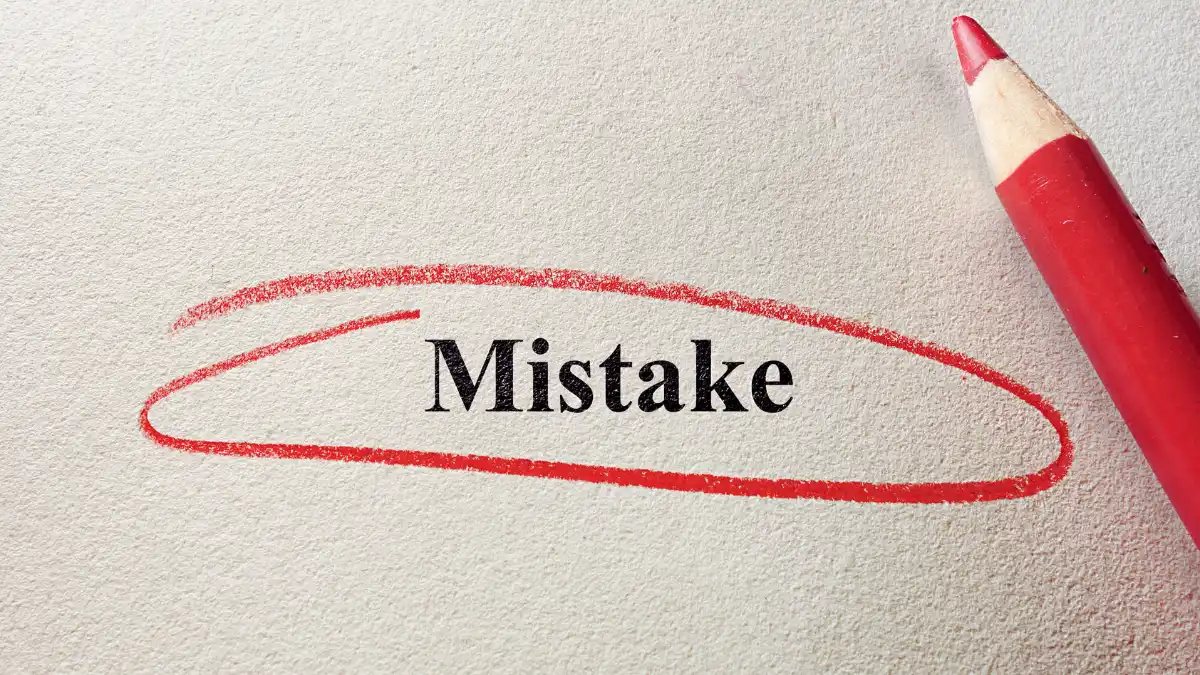You just accepted a $75,000 salary. Good job, right?
Here’s the thing. If you had negotiated—or gone freelance with those same skills—you could have earned $150,000 or more.
This happens all the time. Over half of workers accept the first salary offer, even though pay is their top priority. And nearly nine out of ten hiring managers will keep the offer on the table even after you negotiate.
You’re leaving money on the table. A lot of it.
In this guide, you’ll learn why freelance rates prove your skills are worth way more than your salary, what companies actually pay in 2025 for in-demand skills, how to research your real market value with specific tools, how to build proof that backs up your worth, and the exact negotiation framework that works right now.
Let’s fix this.
The 3X Multiplier: What Freelancers Know About Your True Worth

If you make $50 per hour as an employee, a freelancer with your exact skills charges $100 to $200.
Why? Because the market has already decided what your skills are worth.
Freelancers typically charge 2.0 to 4.0 times what an employee earns per hour. This isn’t random. It’s basic math.
When you’re an employee, your company pays more than your salary. They cover:
- Your health insurance
- Payroll taxes (their share and yours)
- Retirement contributions
- Paid time off
- Office space and equipment
- Training and software
A full-time employee earning $150,000 actually costs the company $195,000 or more. That’s a 30% markup just to keep you employed.
But freelancers? They handle all that themselves. So they charge more per hour to cover those costs.
Here’s what this looks like in real numbers.
In 2024, the average freelance day rate hit £390 (about $490). Strategy consultants averaged £520 per day. Data specialists earned £469 per day.
And it gets better. Seventy percent of freelancers say they earn more than they would as regular employees. In the United States, freelancers earn an average of $99,230 per year, with top earners hitting $200,000.
Think about what this means. Companies willingly pay these premium rates for project work. They know the value. The question is: do you?
Your baseline skills are worth far more than your salary shows. The market proves it every single day.
What Companies Actually Pay for Skills in 2025

While you worry about keeping your job, companies are desperately searching for your skills.
Right now, 63% of employers say skill gaps are their biggest barrier to growth. They can’t find enough qualified people. And 85% of companies plan to focus on training their workers in 2025.
Translation? You have more power than you think.
Here are the skills companies pay the most for right now:
Technical Skills That Command Top Dollar
AI and machine learning top the list, followed by cloud computing, blockchain, data analysis, and software development.
The numbers back this up. Jobs for data scientists will grow by 36% between 2023 and 2033. Software development roles will increase by 25% over the next decade.
But here’s what most people miss.
Soft Skills Pay Too
Companies are looking for creative thinking, analytical thinking, resilience, and leadership. These aren’t bonus skills. They’re core skills that separate you from everyone else.
If you can solve problems, lead teams, and think creatively, you’re more valuable than someone who just has the technical knowledge.
Location and Industry Matter
Where you work changes what you earn. Tech and software companies pay 20-35% more than average. Luxury brands pay 25-50% higher rates.
Your skills might be worth significantly more if you work in the right industry.
The Real Story
Companies are raising their budgets. Canadian companies plan to increase salaries by 3.4% in 2025, with total budgets reaching 3.7%. Some companies are going way higher to get the people they need.
You’re not asking for a favor when you negotiate. You’re solving their problem.
How to Calculate Your Actual Market Value (Step by Step)

Guessing what you’re worth costs you money. Let’s get your exact number.
Step 1: Use Multiple Data Sources
Don’t trust just one website. Check at least three. Here’s what each tool does best:
- PayScale – Gives you personalized salary reports based on your job title, education, skills, location, and experience. It takes about 10 minutes to complete their survey.
- Glassdoor – Shows salary ranges from real people who submitted their data. You can see how your pay would change in different cities or with more experience.
- Salary.com – Includes benefits comparisons and cost-of-living calculators. Good for seeing the full package, not just base salary.
- Levels.fyi – Best for tech jobs. Super detailed about what different companies pay.
- Bureau of Labor Statistics – Government data. Very reliable but sometimes slower to update.
Step 2: Calculate Your Baseline
Take your desired yearly salary. Let’s say it’s $80,000.
Divide by 2,080 (that’s 52 weeks × 40 hours). You get $38.46 per hour.
But wait. Not all your work hours are billable.
Freelancers typically work 60% billable hours and 40% non-billable hours. Non-billable time includes admin work, finding clients, emails, and invoicing.
So divide your hourly rate by 0.6. Now you’re at $64.10 per hour.
Add 15-25% if you’re considering freelance work to cover business costs. That puts you around $73-80 per hour for freelance rates.
Step 3: Find Your Range
Look at all your research. Write down:
- The lowest number you saw
- The highest number you saw
- The middle number
Throw out the extreme highs and lows. Focus on the middle range.
Now adjust for your situation:
- Add 10-15% if you have specialized skills that most people don’t have
- Add 10% if you’re in a high-cost city
- Add 5-10% if you have more experience than the job requires
- Subtract 10% if you’re in a lower-cost area
Step 4: Create Your Three Numbers
- Minimum: The lowest you’ll accept (your walk-away number)
- Target: What you believe you’re worth based on research
- Ideal: Your target plus 15-20%
Always ask for your ideal first. You can negotiate down, but you can’t negotiate up.
Step 5: Verify With Real People
Message 2-3 people on LinkedIn who have your job title. Ask what the salary range is. Most people will tell you.
Join industry groups and ask anonymously if needed.
The whole process takes 2-3 hours. It’s the best investment you’ll make this year.
Building Your Value Portfolio: Show Them The Numbers

Saying you’re “a hard worker” means nothing. Showing you increased revenue by 37% changes everything.
Freelancers who publish a portfolio get hired nine times more often than those who don’t. The same logic applies to employees.
You need proof. Here’s how to build it.
Turn Responsibilities Into Results
Bad: “Managed social media accounts”
Good: “Grew Instagram engagement 70% in six months through targeted campaigns”
Bad: “Led a sales team”
Good: “Delivered 30 keynote speeches to audiences of 1,500 people each”
See the difference? Numbers make you credible.
What to Document Right Now
Start a simple document. Every week, write down:
- The money you saved the company
- Revenue you brought in
- The time you saved on processes
- Problems you solved
- Projects you completed
- People you trained or mentored
Keep this record updated so you have something visual to look back on when you need a self-esteem boost or preparation for reviews.
Build Your Portfolio
Pick your 5-7 best examples. For each one, include:
- The problem or challenge
- What you did (be specific)
- The result (with numbers)
- What you learned
Example:
“Our customer service response time was 48 hours. Customers were angry. I created a new email system and trained the team on it. Response time dropped to 4 hours. Customer satisfaction scores went from 6.2 to 8.7 out of 10.”
Where to Put Your Portfolio
- LinkedIn Featured section – Pin your best work here
- Personal website – Use Google Sites or WordPress if you don’t have one
- Google Docs – Make it private but easy to share during interviews
Get Social Proof
Ask 3-5 people to write recommendations:
- A boss or manager
- A colleague at your level
- Someone you trained or helped
- A client (if applicable)
Tell them what to focus on. Make it easy for them. “Could you write 2-3 sentences about the [specific project] we worked on together?”
Recommendations build trust and show others vouch for your expertise.
Start Today
You don’t need a perfect portfolio. Start with one good example. Add more as you go.
Your past wins are your future negotiation power.
The LinkedIn Advantage: Making Sure People Find You

77% of recruiters use LinkedIn to find candidates. Your next job won’t find you through job boards. It’ll find you here.
And here’s the problem. There are now 2.5 applicants for every job posting on LinkedIn, up from 1.5 in 2022. Competition is higher. You need to stand out.
A strong LinkedIn profile does three things:
- Recruiters find you when they search
- People who visit your profile are impressed
- Your network helps you connect to opportunities
Fix Your Headline First
Your headline shows up everywhere. In search results. In comments. When you message people.
Bad: “Marketing Manager at ABC Company”
Good: “Marketing Manager | Helped 3 Companies Grow Revenue 40%+ Through Email Campaigns”
The second one tells people what you actually do and what results you get.
Write Your About Section Like a Story
Combine professional achievements with a touch of personality. Don’t just list your job history. Tell people why you do what you do.
Keep it under 200 words. Use short paragraphs. Make it easy to read on phones.
Include:
- What you do
- Who you help
- Your biggest results
- What you’re working on now
- How can people contact you
Show Your Work
Use your Experience section to highlight accomplishments over responsibilities, and include numbers.
Example: “Increased team efficiency by 25% through process optimization” beats “Managed team projects.”
Get Strategic With Skills
Add 10-15 relevant skills to your profile. Ask people to endorse you for your top 5.
LinkedIn’s algorithm pays attention to this. The more endorsements you have, the higher you show up in searches.
Post Content (Even If You’re Scared)
Regularly post and share relevant articles or insights. Engage with others by commenting thoughtfully.
You don’t need to post every day. Start with once a week. Share:
- Something you learned
- A problem you solved
- An interesting article with your take
- A tip from your field
Keep posts under 150 words for better engagement.
Build Real Connections
Don’t just collect connections. Be strategic. Connect with:
- People in your industry
- People at companies you’d like to work for
- Recruiters who work in your field
- People whose content you find valuable
When you send a connection request, write a short note. “Hi Sarah, I saw your post about marketing automation. I work in the same field and would love to connect.”
The 15-Minute Weekly Plan
- Update your headline if needed (5 minutes, one time)
- Request one recommendation (2 minutes)
- Share one valuable post or article (5 minutes)
- Comment on 3 people’s posts (8 minutes)
That’s it. 70% of employers find a personal brand more essential than a resume. Spend the time.
The Negotiation Framework That Actually Works in 2025

Most employers expect candidates to negotiate pay. If you don’t, you actually lose credibility.
Here’s the framework that works right now.
Before You Start: Break This Myth
You won’t lose the job offer by negotiating. Almost 90% of hiring managers still offer you the job even after you negotiate hard.
Companies budget for negotiation. They expect it. They respect it.
Step 1: Research and Prepare (Before You Apply)
Use the Bureau of Labor Statistics, Levels.fyi, ZipRecruiter, and PayScale to find data that proves your desired number is realistic.
Write down:
- Your target salary range
- Three examples of your biggest wins (with numbers)
- Why are you worth that amount
- What you’ll walk away with
Step 2: Time It Right
Start conversations early in the year, before you’re desperate for an answer, giving your manager time to advocate for you.
For job offers: Most employers expect salary discussions during first interviews, though traditional negotiation begins when an offer is made.
For raises: Wait until after a big win or during annual reviews.
Step 3: Build Your Case
The best justifications focus on what’s a win for the other party—your contributions and results.
Don’t say: “I need more money because rent went up.”
Say: “I’ve increased our email conversion rate by 40%, which brought in an extra $200K in revenue this year. Based on my research of market rates and the value I’ve added, I’d like to discuss adjusting my salary to $X.”
Use 1-2 solid examples of why the company should invest more in you. More than that, and you lose focus.
Step 4: Make Your Ask
Be direct. Don’t apologize. Don’t explain too much.
“Based on my research and the results I’ve delivered, I’m looking for a salary in the range of $85,000 to $95,000.”
Then stop talking. Let them respond.
Use positive language that emphasizes benefits rather than demands. Frame it as a business discussion, not a personal request.
Step 5: Handle Their Response
If they say yes: Great. Get it in writing.
If they say maybe: Ask when you can follow up. Your boss may need to negotiate with someone else on your behalf, and that can’t happen instantly.
If they say no to salary: Negotiate other benefits like bonuses, equity, professional development budget, remote work days, or flexible schedules.
If they say no to everything, you have three choices. Accept it, counter one more time, or walk away.
What to Say If They Push Back
“I understand budget constraints. Can we discuss other options like [performance bonus/professional development budget/extra vacation days]?”
Or: “What would need to happen for us to reach $X in the next review period?”
Key Numbers to Remember
Canadian companies plan average salary increases of 3.4% in 2025, with total budgets reaching 3.7%. Some companies are going higher for top talent.
If you’re switching jobs, aim for 15-20% more than your current salary. The market supports it.
Practice First
Say your pitch out loud five times. It’ll feel weird. Do it anyway.
Practice with a friend or record yourself. You need to sound confident, not desperate.
Negotiation isn’t confrontation. It’s a business conversation. Treat it that way.
5 Mistakes That Cost You Money

Over half of job seekers accept the first offer even though salary is their top priority. Here are the other mistakes that drain your lifetime earnings.
Mistake 1: Not Doing Your Research
Going into a salary conversation without data makes you look either entitled or uninformed.
The fix: Spend 2-3 hours researching. Use the tools we covered earlier. Know your numbers cold.
Mistake 2: Focusing on What You Need Instead of What You’re Worth
Employers don’t hire to support your lifestyle. They hire to solve problems and generate returns.
Bad: “I need $90K because I just bought a house.”
Good: “I’m asking for $90K because that’s the market rate for someone who has grown revenue by 30% in similar roles.”
The fix: Build your case around value, not personal expenses.
Mistake 3: Accepting Without Negotiating
Only 44% of U.S. employees negotiate their salary. That means 56% leave money on the table immediately.
And here’s the worst part. If you were underpaid in a previous position, you’ll likely continue being underpaid in the future, since many employers base new offers on your last salary.
The fix: Always counter. Even if it’s just asking for 5-10% more, get comfortable with the conversation.
Mistake 4: Not Documenting Your Wins
If you can’t prove your impact, it’s your word against their perception.
The fix: Start documenting your successes and positive experiences right now. Keep a running list you can reference.
Every Friday, write down one thing you accomplished that week. After a year, you’ll have 52 examples.
Mistake 5: Thinking Soft Skills Don’t Count
Communication, leadership, problem-solving, and emotional intelligence are increasingly valuable. Companies know AI can’t replace these skills.
The fix: Include soft skills in your value portfolio. Show how your leadership saved time, how your communication prevented problems, and how your adaptability helped during changes.
The Real Cost
Let’s do the math. Say you accept a job at $70,000 when you could have negotiated for $77,000.
That’s $7,000 less per year. Over 10 years, that’s $70,000. And that’s before counting raises (which are usually percentages of your base).
The actual cost is probably $100,000 or more over a decade.
Every mistake compounds. But so does every good decision.
Your Next Steps: Start Today

Your skills are worth more than you think. The gap between employee salaries and freelance rates proves it. And with 63% of employers citing skill gaps as their biggest barrier, you have more power than ever.
Here’s what to do this week:
Day 1: Research Your Worth
- Spend 30 minutes on PayScale and Glassdoor
- Write down your three numbers (minimum, target, ideal)
- Message one person on LinkedIn about typical salary ranges
Day 2: Document Your Wins
- List 5 achievements from the past year
- Add numbers to each one
- Pick your strongest example
Day 3: Fix Your LinkedIn
- Update your headline to show your value
- Request one recommendation
- Add or update your About section
Day 4: Build Your Case
- Write out your negotiation pitch
- Include your biggest wins
- Practice saying it out loud
Day 5: Take Action
- Schedule a conversation with your manager, or
- Apply to jobs with your new knowledge, or
- Update your freelance rates based on real market data
Remember This
Nearly 90% of hiring managers keep offers on the table after negotiation. The risk you think exists doesn’t.
Your skills have real market value. Companies pay freelancers 2-4x employee rates for the same work. That gap shows what you’re actually worth.
Stop accepting less than you deserve. Research your value. Build your proof. Make your case.
The money is already out there. You just need to ask for it.
Start today. Your future self will thank you.






